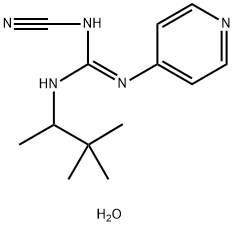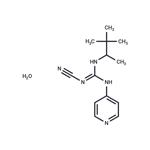Pinacidil is a peripheral vasodilator useful in the management of arterial hypertension of
all degrees of seventy, usually in combination with a diuretic or beta-blocker. Preclinical
evidence suggests that its hypotensive effect may be attributed to potassium channel
activation.
1) Hermsmeyer et al. (1988), Pinacidil actions on ion channels in vascular muscle; J. Cardiovasc. Pharmacol., 12(Suppl. 2) S17
2) Gollasch et al. (1995), Pinacidil relaxes porcine and human coronary arteries by activating ATP-dependent potassium channels in smooth muscle cells; J. Pharmacol. Exp. Therap., 275 681
3) Cohen & Kurz (1988), Pinacidil-induced vascular relaxation: comparison to other vasodilators and to classical mechanisms of vasodilation; J. Cardiovasc. Pharmacol., 12(Suppl. 2) S5
4) Teshima et al. (2003), Mitochondrial ATP-sensitive potassium channel activation protects cerebellar granule neurons from apoptosis induced by oxidative stress; Stroke, 34 1796
5) Xie et al. (2010), K(ATP) channel openers protect mesencephalic neurons against MPP+-induced cytotoxicity via inhibition of ROS protection; J. Neurosci. Res., 88 428
6) Zhang et al. (2008), Effects of ATP sensitive potassium channel opener on the mRNA and protein expressions of caspase-12 after cerebral ischemia-reperfusion in rats; Neurosci. Bull., 24 7



